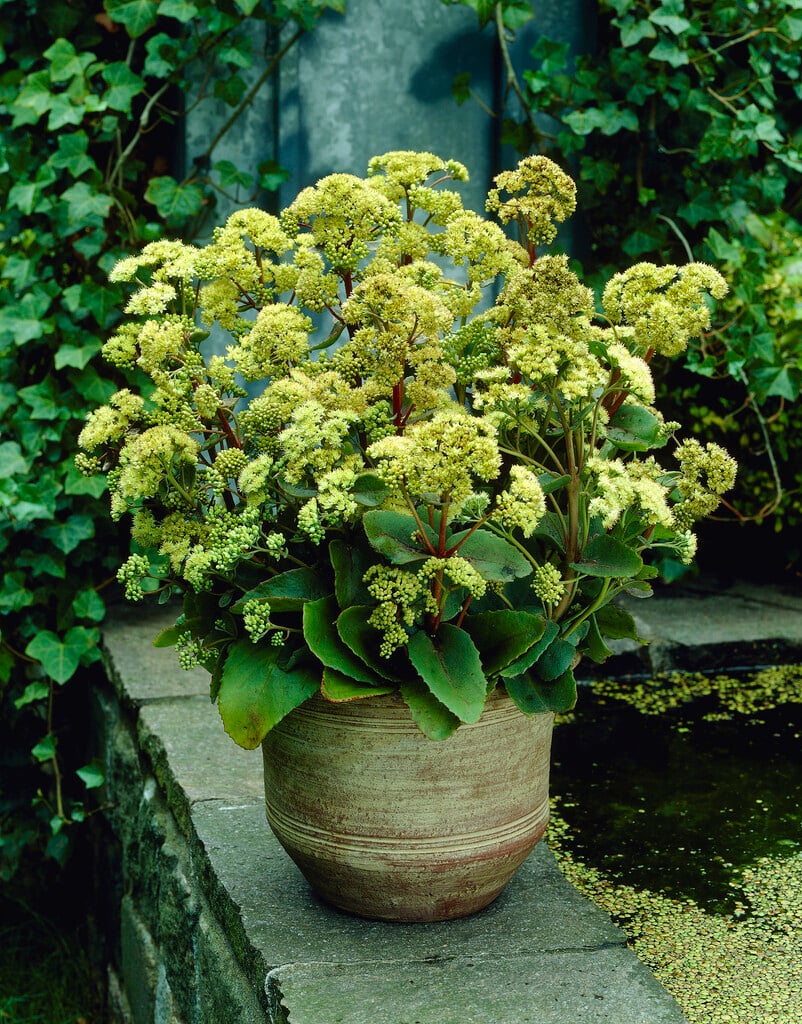Hylotelephium populifolium
poplar-leaved stonecrop
A slowly-spreading, deciduous sub-shrub with dark brown stems and green, heart-shaped leaves with wavy edges. Clusters of small, scented, star-shaped flowers, white tinged with pink, appear in late summer and early autumn
Size
Ultimate height
0.1–0.5 metresTime to ultimate height
2–5 yearsUltimate spread
0.1–0.5 metresGrowing conditions
Moisture
Well–drainedpH
Alkaline, NeutralColour & scent
| Stem | Flower | Foliage | Fruit | |
| Spring | Brown | Green | ||
|---|---|---|---|---|
| Summer | Brown | Pink White | Green | |
| Autumn | Brown | Pink White | Green | |
| Winter |
Position
- Full sun
Aspect
South–facing or East–facing or West–facing
Exposure
Exposed or Sheltered Hardiness
H6Botanical details
- Family
- Crassulaceae
- Native to GB / Ireland
- No
- Foliage
- Deciduous
- Habit
- Bushy
- Potentially harmful
- May cause mild stomach upset if eaten, contact with sap may irritate skin. Wear gloves and other protective equipment when handling
- Genus
Hylotelephium are succulent perennials with heads of small star-shaped flowers in summer to autumn. They are sometimes included within the genus Sedum
- Name status
Correct
- Plant range
- Siberia
How to grow
Cultivation
Grow in moderately fertile, well-drained, neutral to slightly alkaline soil in full sun
Propagation
Propagate by division in spring. Propagate by softwood cuttings of non-flowering shoots in early summer
Suggested planting locations and garden types
- Gravel garden
- Patio and container plants
- City and courtyard gardens
- Coastal
- Cottage and informal garden
- Rock garden
- Garden edging
- Flower borders and beds
Pruning
Cut back after flowering to maintain shape or leave seedheads overwinter
Pests
May be susceptible to slugs, snails and vine weevil
Diseases
May be subject to crown rot and root rot
Get involved
The Royal Horticultural Society is the UK’s leading gardening charity. We aim to enrich everyone’s life through plants, and make the UK a greener and more beautiful place.
